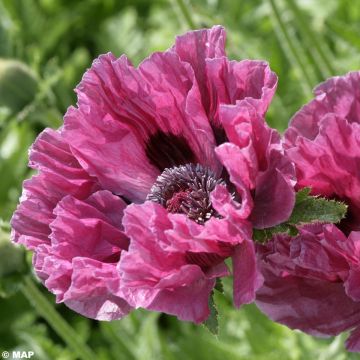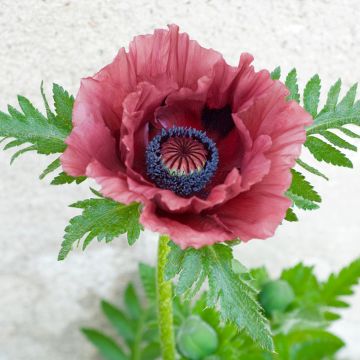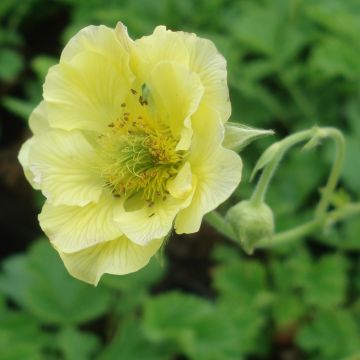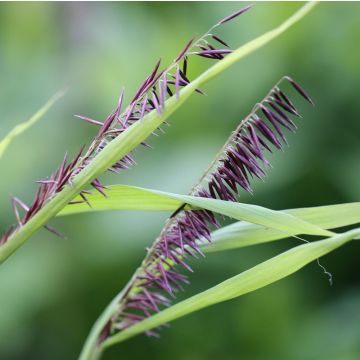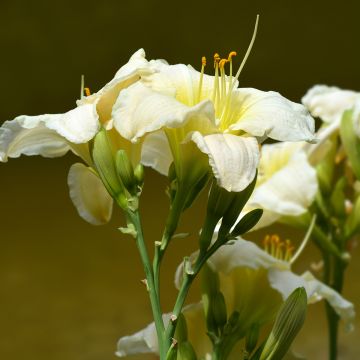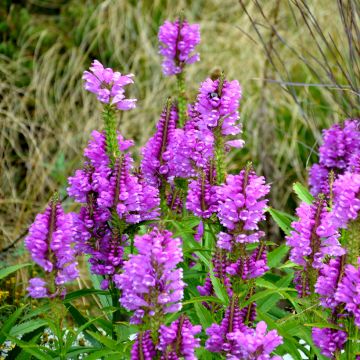

Red and White Oriental Poppy Collection
Red and White Oriental Poppy Collection
Papaver orientale Brilliant, Royal Wedding, Picotee
Oriental Poppy
Special offer!
Receive a €20 voucher for any order over €90 (excluding delivery costs, credit notes, and plastic-free options)!
1- Add your favorite plants to your cart.
2- Once you have reached €90, confirm your order (you can even choose the delivery date!).
3- As soon as your order is shipped, you will receive an email containing your voucher code, valid for 3 months (90 days).
Your voucher is unique and can only be used once, for any order with a minimum value of €20, excluding delivery costs.
Can be combined with other current offers, non-divisible and non-refundable.
This plant carries a 12 months recovery warranty
More information
We guarantee the quality of our plants for a full growing cycle, and will replace at our expense any plant that fails to recover under normal climatic and planting conditions.
Would this plant suit my garden?
Set up your Plantfit profile →
Collection items (3 plants)
Description
This collection of red and white Oriental poppies brings together 3 excellent perennial varieties that bloom from June to July in a very invigorating combination of red and white. The large flowers with crumpled silk petals are carried by tall, sturdy stems, towering over lush and velvety foliage that stands out in flower beds. A familiar sight in cottage gardens, the Oriental poppy is a hardy perennial that is truly easy to grow in all good, deep soils in full sun.
The collection consists of:
- 1 poppy or Papaver orientale 'Picotee': a fairly stout variety (60-70 cm tall), with slightly ruffled flowers measuring 12-14 cm, more or less edged with orange to salmon on a white background, dark centre surrounded by almost black macules.
- 1 poppy or Papaver orientale 'Royal Wedding': floral stems reaching 80 cm, pure white silk corollas with black central macules measuring up to 20 cm in diameter.
- 1 poppy or Papaver orientale 'Brilliant': the typical cottage garden poppy, with a scarlet red flower speckled with black in the centre. Its floral stems rise to 90 cm.
The Papaver orientale, also known as the Tournefort poppy, forms a bushy clump that thickens over the years. Its large, rough, hairy leaves have a decorative grey-blue or silvery sheen. The fleshy and deep roots of the Oriental poppy do not tolerate transplantation well, especially in mature plants.
Oriental poppies are excellent perennial plants for flower beds. Behind their large crumpled petal flowers lies a very robust plant capable of surviving in very dry soils during summer. After abundant flowering in late spring, the poppy dries up, starting with the floral stems, which can be used in dried bouquets, followed by the leaves. It completely disappears to enter dormancy in the heart of summer and re-emerges in autumn to bloom again as soon as the temperatures become milder. Its only fear is winter moisture; in clay soils, the solution is to replace the soil with pure sand in the planting hole. Space the plants 40-50 cm apart. Accompany them with perennials, as they will fill the space after flowering.
Oriental poppies are ideal for sophisticated flower beds, cottage gardens, or rustic compositions. Combine these red and white Oriental poppies with daisies, thistles, and catnips with delicate blooms. You can also plant them with autumn stonecrops, for example. The vibrant colours of spurges and ladies' mantles blend perfectly with red and white.
Flowering
Foliage
Plant habit
Botanical data
Papaver
orientale
Brilliant, Royal Wedding, Picotee
Papaveraceae
Oriental Poppy
Cultivar or hybrid
Other Oriental Poppies (Papaver orientale)
View all →Planting and care
Perennial poppies like full sun and will grow in any well-drained garden soil. In clay soils, plant your poppy in a hole filled with pure sand to a volume equivalent to three times that of the pot. During the summer, cut back the spent flowering stems and clean up the old foliage, but be careful! Ensure you wear gloves, as the white latex secreted by the plant is toxic. It can cause serious burns if it comes into contact with the eyes!
Although they prefer light, cool soil, oriental poppies are just as at home in dry, gravelly, chalky soils as in heavier, clayey, damp ones, provided they are well drained and don't get soggy in winter. The plant needs water throughout its vegetation and flowering period in autumn and spring but does without in summer. Another characteristic of this poppy is that its foliage disappears soon after flowering, but if you cut back the wilted inflorescences early on, new foliage grows at the end of the summer, filling the gap left at the end of the season.
Planting period
Intended location
Care
Planting & care advice
This item has not been reviewed yet - be the first to leave a review about it.
Similar products
Haven't found what you were looking for?
Hardiness is the lowest winter temperature a plant can endure without suffering serious damage or even dying. However, hardiness is affected by location (a sheltered area, such as a patio), protection (winter cover) and soil type (hardiness is improved by well-drained soil).

Photo Sharing Terms & Conditions
In order to encourage gardeners to interact and share their experiences, Promesse de fleurs offers various media enabling content to be uploaded onto its Site - in particular via the ‘Photo sharing’ module.
The User agrees to refrain from:
- Posting any content that is illegal, prejudicial, insulting, racist, inciteful to hatred, revisionist, contrary to public decency, that infringes on privacy or on the privacy rights of third parties, in particular the publicity rights of persons and goods, intellectual property rights, or the right to privacy.
- Submitting content on behalf of a third party;
- Impersonate the identity of a third party and/or publish any personal information about a third party;
In general, the User undertakes to refrain from any unethical behaviour.
All Content (in particular text, comments, files, images, photos, videos, creative works, etc.), which may be subject to property or intellectual property rights, image or other private rights, shall remain the property of the User, subject to the limited rights granted by the terms of the licence granted by Promesse de fleurs as stated below. Users are at liberty to publish or not to publish such Content on the Site, notably via the ‘Photo Sharing’ facility, and accept that this Content shall be made public and freely accessible, notably on the Internet.
Users further acknowledge, undertake to have ,and guarantee that they hold all necessary rights and permissions to publish such material on the Site, in particular with regard to the legislation in force pertaining to any privacy, property, intellectual property, image, or contractual rights, or rights of any other nature. By publishing such Content on the Site, Users acknowledge accepting full liability as publishers of the Content within the meaning of the law, and grant Promesse de fleurs, free of charge, an inclusive, worldwide licence for the said Content for the entire duration of its publication, including all reproduction, representation, up/downloading, displaying, performing, transmission, and storage rights.
Users also grant permission for their name to be linked to the Content and accept that this link may not always be made available.
By engaging in posting material, Users consent to their Content becoming automatically accessible on the Internet, in particular on other sites and/or blogs and/or web pages of the Promesse de fleurs site, including in particular social pages and the Promesse de fleurs catalogue.
Users may secure the removal of entrusted content free of charge by issuing a simple request via our contact form.
The flowering period indicated on our website applies to countries and regions located in USDA zone 8 (France, the United Kingdom, Ireland, the Netherlands, etc.)
It will vary according to where you live:
- In zones 9 to 10 (Italy, Spain, Greece, etc.), flowering will occur about 2 to 4 weeks earlier.
- In zones 6 to 7 (Germany, Poland, Slovenia, and lower mountainous regions), flowering will be delayed by 2 to 3 weeks.
- In zone 5 (Central Europe, Scandinavia), blooming will be delayed by 3 to 5 weeks.
In temperate climates, pruning of spring-flowering shrubs (forsythia, spireas, etc.) should be done just after flowering.
Pruning of summer-flowering shrubs (Indian Lilac, Perovskia, etc.) can be done in winter or spring.
In cold regions as well as with frost-sensitive plants, avoid pruning too early when severe frosts may still occur.
The planting period indicated on our website applies to countries and regions located in USDA zone 8 (France, United Kingdom, Ireland, Netherlands).
It will vary according to where you live:
- In Mediterranean zones (Marseille, Madrid, Milan, etc.), autumn and winter are the best planting periods.
- In continental zones (Strasbourg, Munich, Vienna, etc.), delay planting by 2 to 3 weeks in spring and bring it forward by 2 to 4 weeks in autumn.
- In mountainous regions (the Alps, Pyrenees, Carpathians, etc.), it is best to plant in late spring (May-June) or late summer (August-September).
The harvesting period indicated on our website applies to countries and regions in USDA zone 8 (France, England, Ireland, the Netherlands).
In colder areas (Scandinavia, Poland, Austria...) fruit and vegetable harvests are likely to be delayed by 3-4 weeks.
In warmer areas (Italy, Spain, Greece, etc.), harvesting will probably take place earlier, depending on weather conditions.
The sowing periods indicated on our website apply to countries and regions within USDA Zone 8 (France, UK, Ireland, Netherlands).
In colder areas (Scandinavia, Poland, Austria...), delay any outdoor sowing by 3-4 weeks, or sow under glass.
In warmer climes (Italy, Spain, Greece, etc.), bring outdoor sowing forward by a few weeks.



































